The bleeding mycena (Mycena haematopus) is a really fun foraging find. It isn’t a top edible species; it’s just really cool. When the flesh and stem are damaged, a deep reddish liquid oozes out like blood. Or a rich cabernet wine. It actually looks more like wine or grape juice, but it’s more fun to say blood. Bleeding mycenas are widespread across North America and often appear in vast troops on decaying hardwood.
- Scientific Name: Mycena haematopus
- Common Names: Blood-foot mushroom, Bleeding fairy helmet, Burgundydrop bonnet, Bleeding Mycena
- Habitat: Dead and decaying hardwood
- Edibility: Not edible
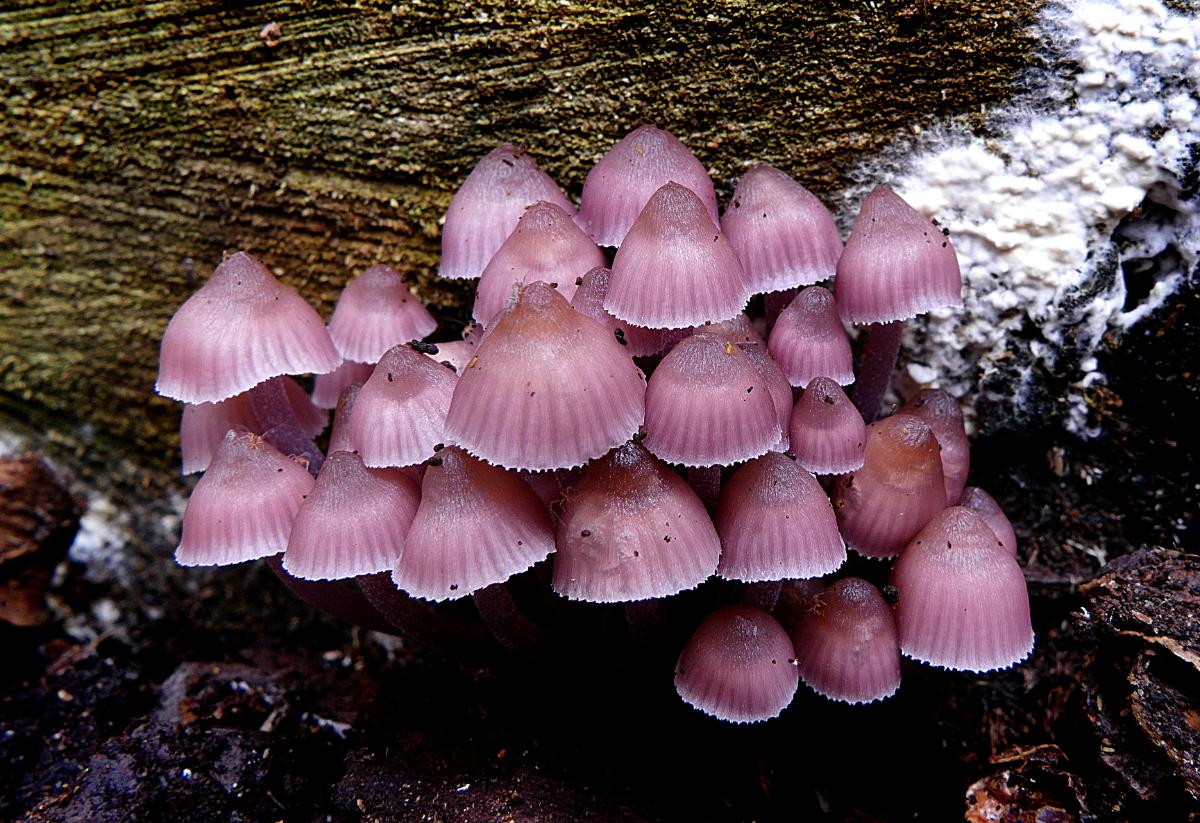
Jump to:
All About The Bleeding Mycena
The bleeding mycena’s most captivating feature is its ability to ooze a reddish latex when cut or injured. It can be quite the shock when you’re not expecting it! This phenomenon occurs due to special cells in the gill tissue called lactifers. When damaged, these cells release the latex, creating the illusion of bleeding. The intensity of the bleeding can vary based on the mushroom’s freshness, age, and substrate moisture.
Bleeding mycena mushrooms aren’t the only fungi that bleed a red liquid! The devil’s tooth fungus is also a bleeder and very interesting mushroom species. Learn more about weird fungi from out Creepiest Fungi In North America article.
The genus name Mycena comes from the ancient Greek word for mushroom. The specific epithet haematopus is derived from Greek roots: “haemato-” meaning blood, and “-pus” meaning foot. This name refers to the blood-like latex that oozes from cut or broken stems, a distinctive feature of this species.
The bleeding mycena was first described as Agaricus haematopus by Christiaan Hendrik Persoon in 1799. Paul Kummer later moved it to the genus Mycena in 1871, giving it its current scientific name.
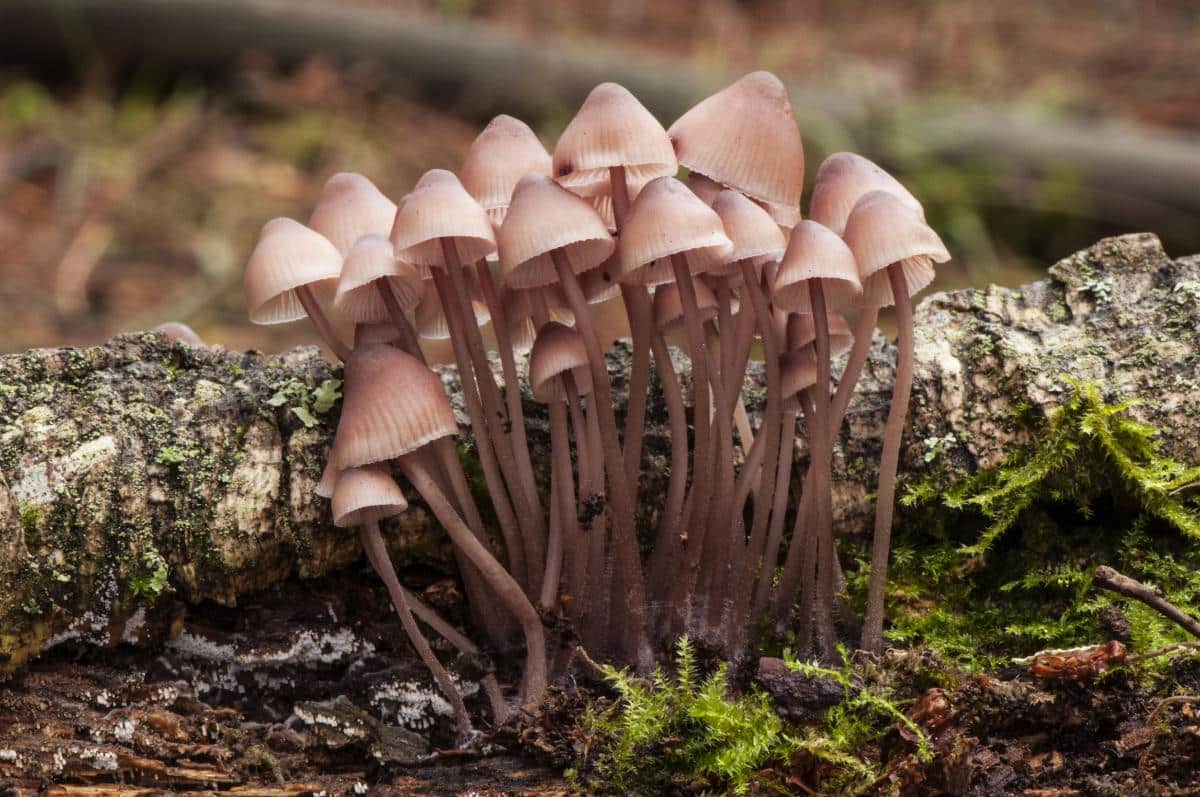
Bleeding Mycena Identification
Season
While primarily found from spring through fall, the bleeding Mycena can appear year-round in mild climates.
Habitat
The bleeding mycena thrives on decaying hardwood, particularly oak and beech trees. It’s often found on well-rotted stumps, fallen trunks, and logs without bark. This saprobic fungus plays a crucial role in decomposing woody debris on the forest floor, appearing as a “late colonizer” after initial decay by white rot species.
These mushrooms typically grow in clusters, joined at a common base. Occasionally, they grow alone or scattered in well-shaded, damp locations.
The bleeding mycena mushroom is widely distributed across North America, Europe, and parts of Asia. In North America, it ranges from Alaska to the eastern United States, and from New Hampshire to Georgia. The species has also been spotted in Chile, eastern Australia, and Japan.
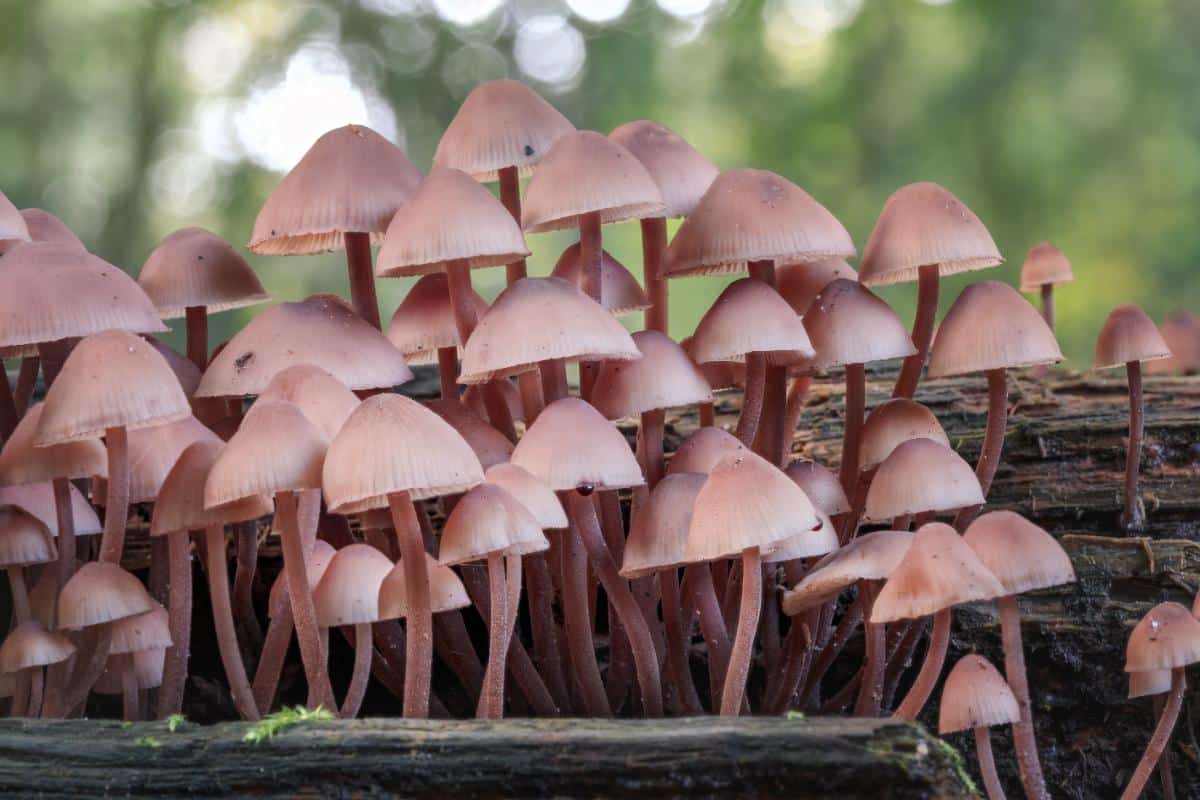
Identification
Cap
The bleeding mycena cap measures 1-2 inches wide. The surface is dry and transitions from reddish-brown at the center to reddish-gray near the edges. Young caps start oval or bell-shaped. Later, they expand to broadly rounded or nearly flat. The cap’s edge often extends over the gills and may develop toothed or scalloped edges as it matures. The edges are also usually striate, meaning you can see the outline of the gills beneath as lines in the cap.
This mushroom is often the victim of parasites that give it a wild and crazy look. The thin and fragile fruiting bodies of Mycena are particularly vulnerable to attack. The Zygomycetes called Spinellus fusiger is a parasitic pin mold that sends out multitudes of thin white filaments straight out from the mycena’s cap. It looks like the mushroom is having a terrible hair day!
Like many parasites, this one does not kill its host. It also doesn’t infect all members of a fungi population. A parasite needs to keep its host alive to continue to feast on it (or its offspring) in the future. So, don’t be surprised to find thin white hairs all over some of the mushroom clusters.

Gills
The gills are closely spaced and attached to the stem. Initially, they are whitish, but they turn grayish or purplish with age. A unique feature is their ability to stain reddish-brown when bruised. The gill edges have a distinctive cottony-white appearance.
Stem
The stem, measuring 1-4 inches, is brownish to reddish-brown in color. It’s fragile, hollow, and sometimes covered with scattered hair-like fibers.
Odor and Taste
There is no distinctive odor, and the taste is either mild or somewhat bitter.
Flesh
The flesh of the mushroom is pale pinkish to deep wine red.
Spore Print
The spore print is white.
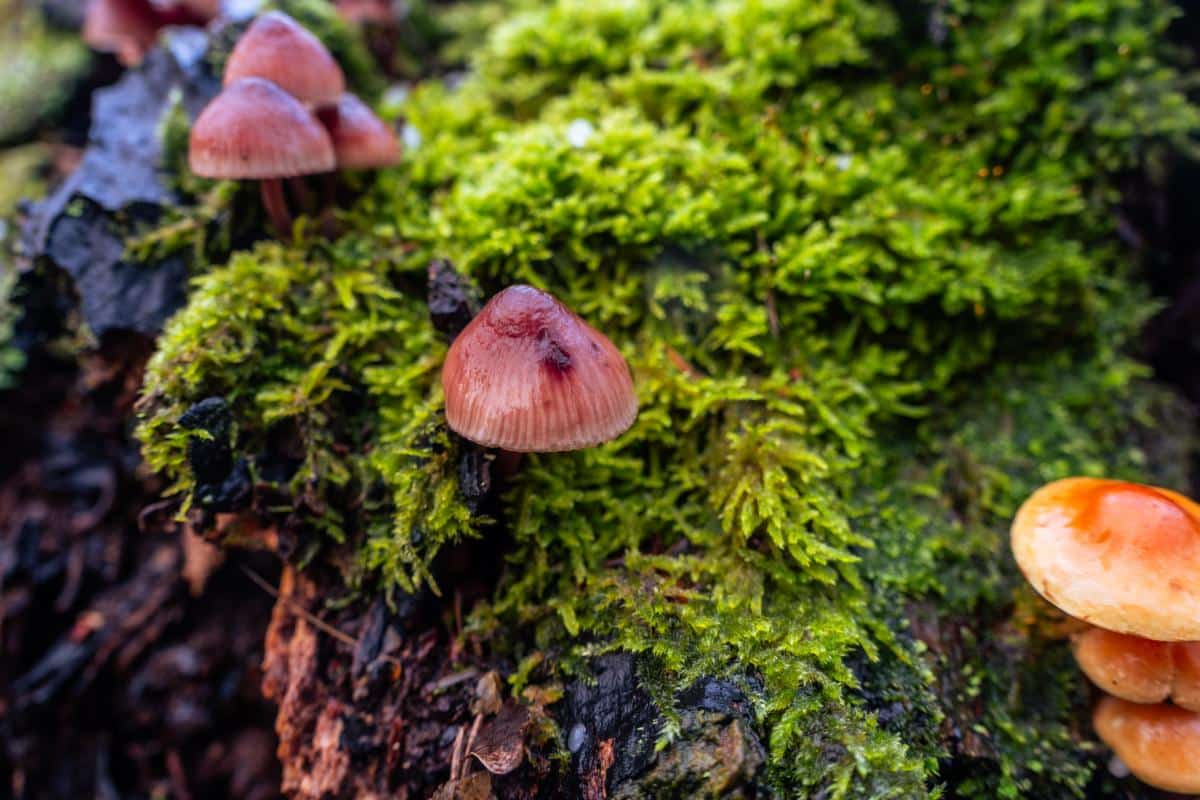
The “Bleeding” Feature
The cool aspect of Mycena haematopus is its ‘bleeding’ characteristic. When cut or broken, both the cap and stem exude a wine-red latex resembling blood or grape juice. The stem bleeds the most when squeezed.
This phenomenon occurs due to specialized cells called lactifers present in the gill tissue. When damaged, these cells release the latex, creating the illusion of bleeding. The intensity of this “bleeding” can vary based on factors such as the mushroom’s freshness, age, and substrate moisture.
The primary pigment responsible for the red color is haematopodin B, a pyrroloquinoline alkaloid. This compound is highly sensitive, breaking down upon exposure to air and light. Other red pigments include mycenarubins D, E, and F. These chemicals were previously thought to be rare in terrestrial species, making their presence in the bleeding mycena particularly intriguing.
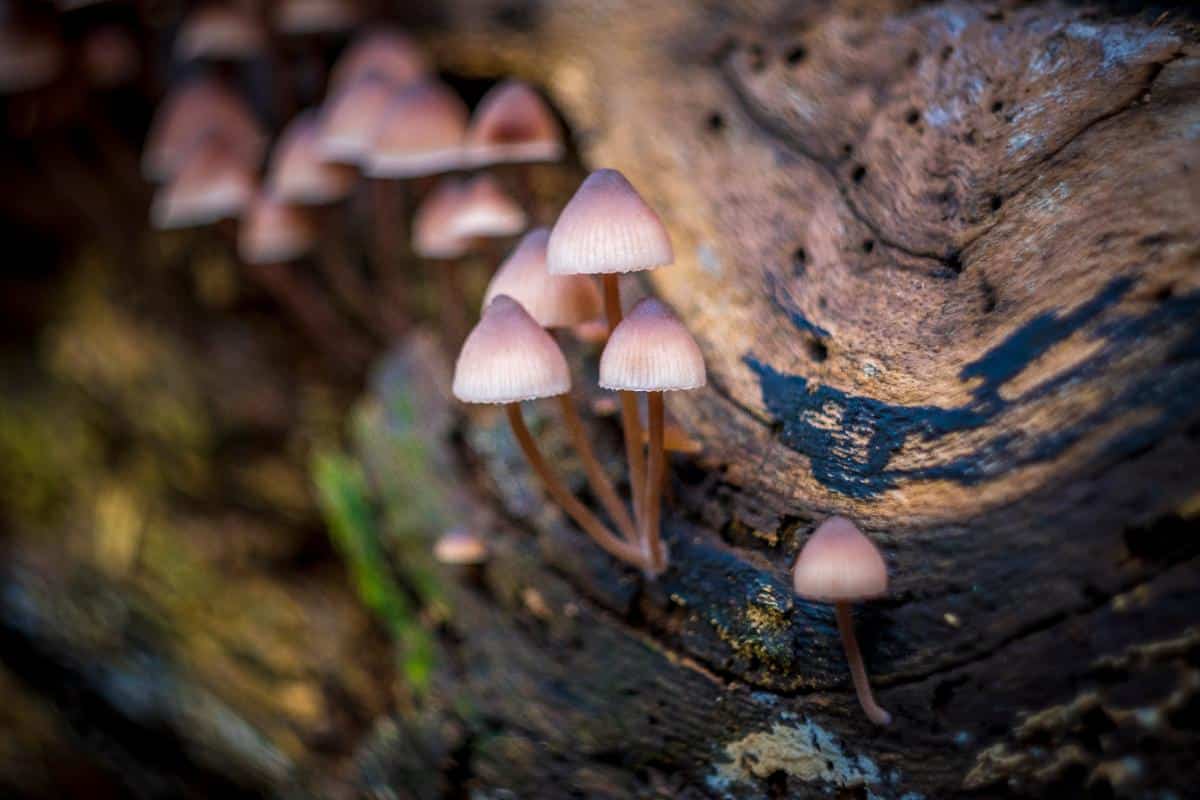
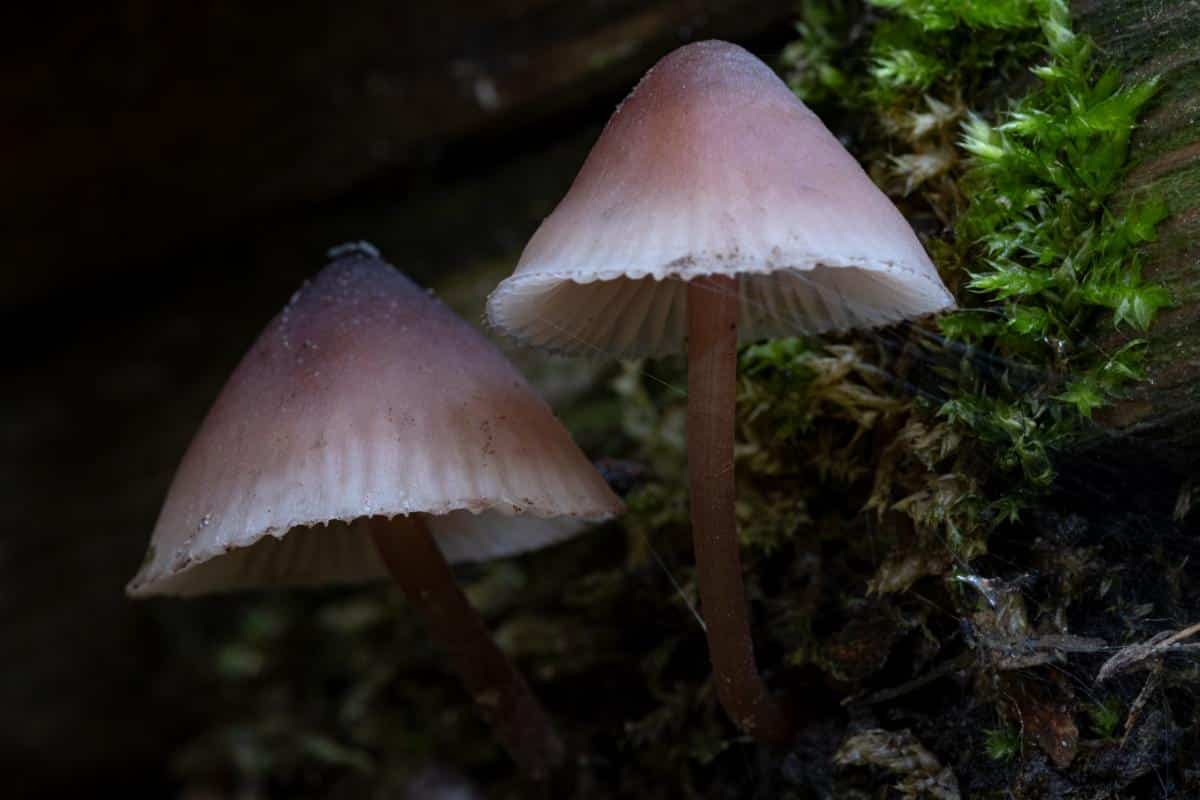
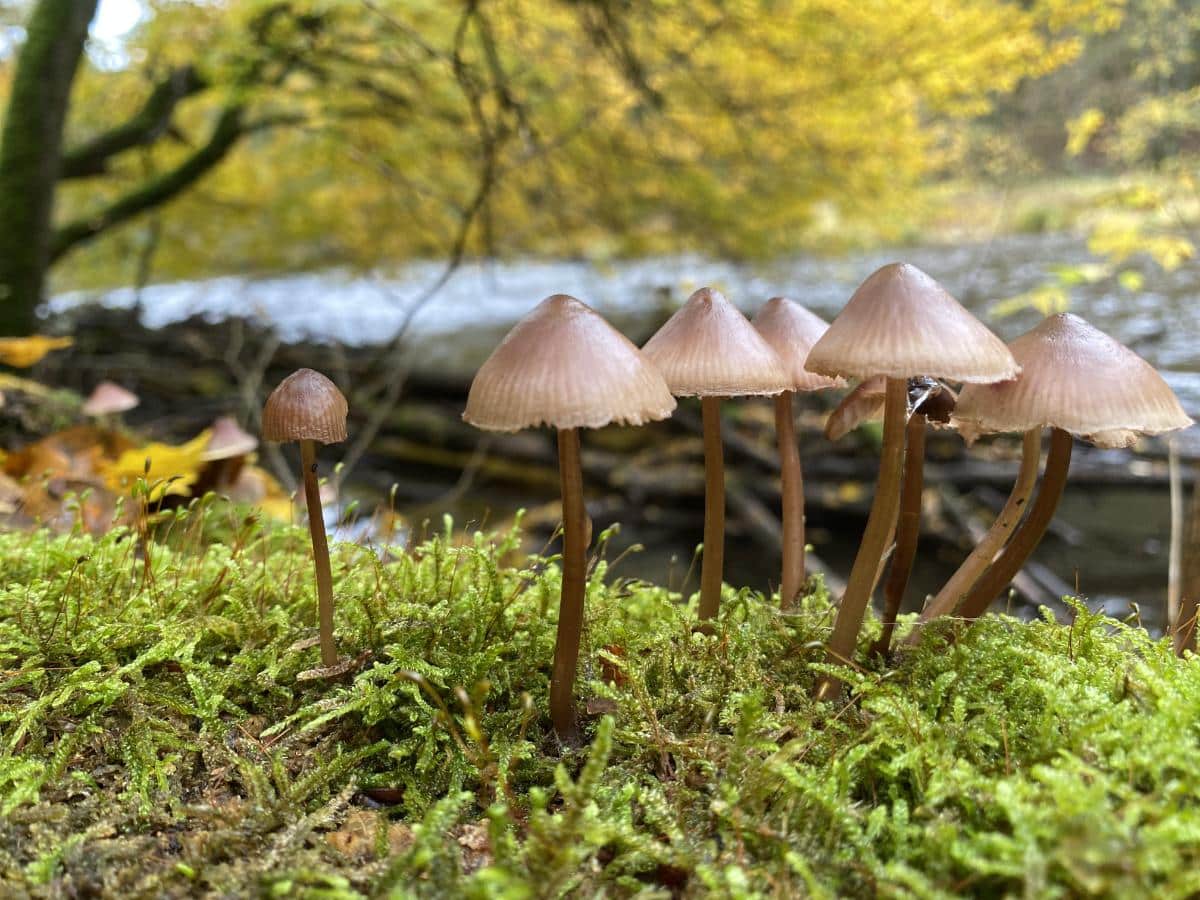
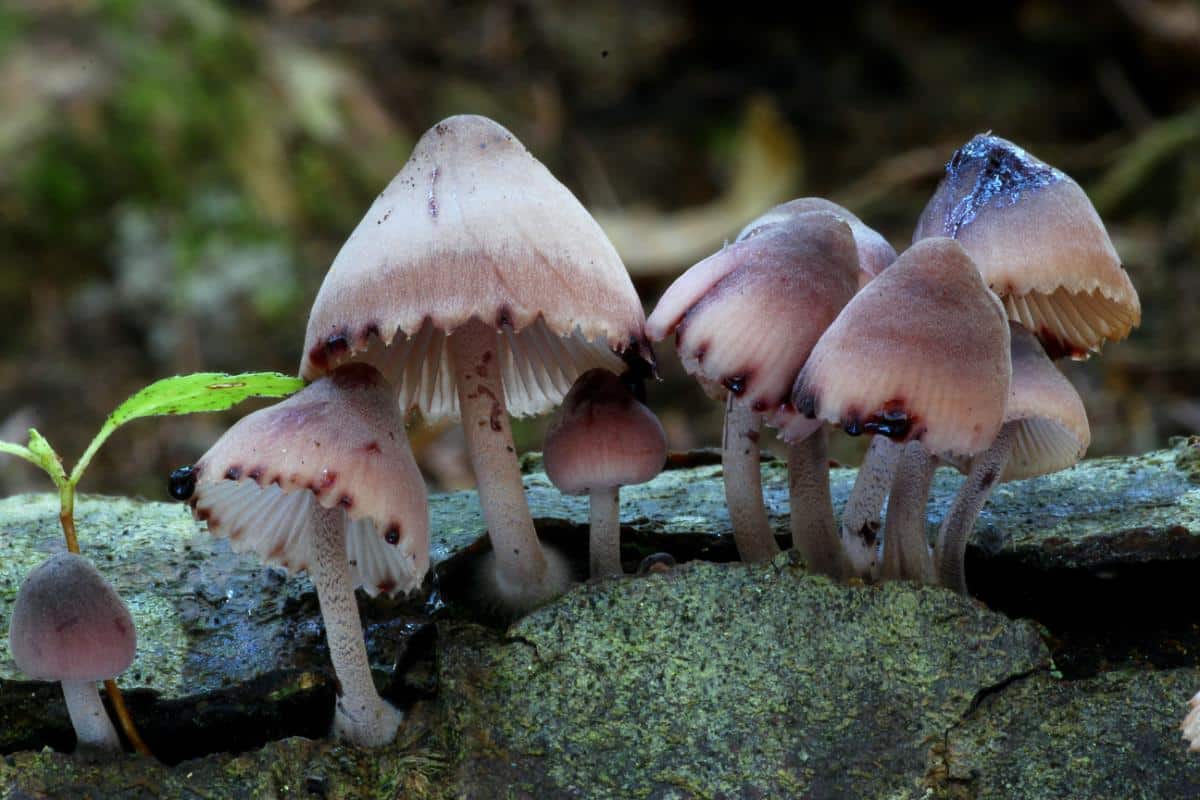

Bleeding Mycena Mushroom Lookalikes
Smaller Bleeding Mycena (Mycena sanguinolenta)
This sibling closely resembles the bleeding mycena. However, its cap is more reddish-orange to orange-brown, and it grows on the ground in leaf litter or moss beds in conifer forests, unlike M. haematopus, which prefers decaying hardwood. This species is also smaller, grows in groups instead of clusters, and does not have the cottony band of tissue around the edge of the gills like M. haematopus.
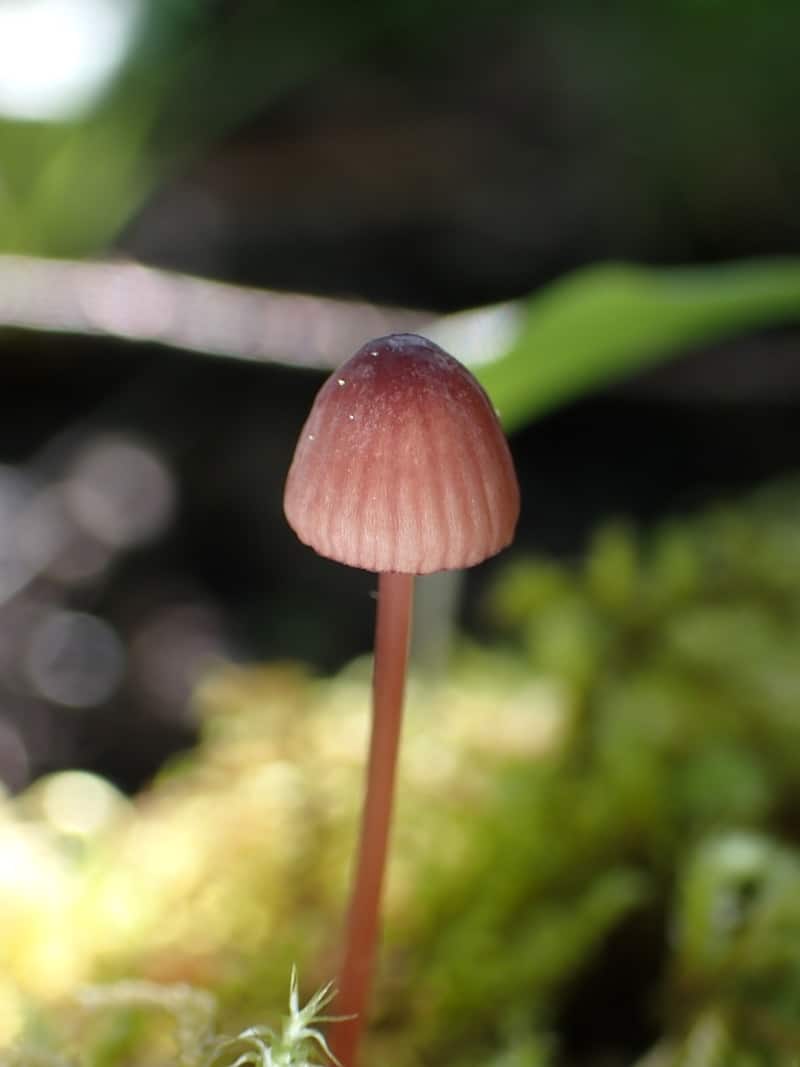
Mycena californiensis
This is another bleeding mycena variety, but unlike M. haematopus, it grows on fallen leaves and acorns instead of decaying wood. It is found only in California and usually grows with black oak, valley oak, or coast live oak.
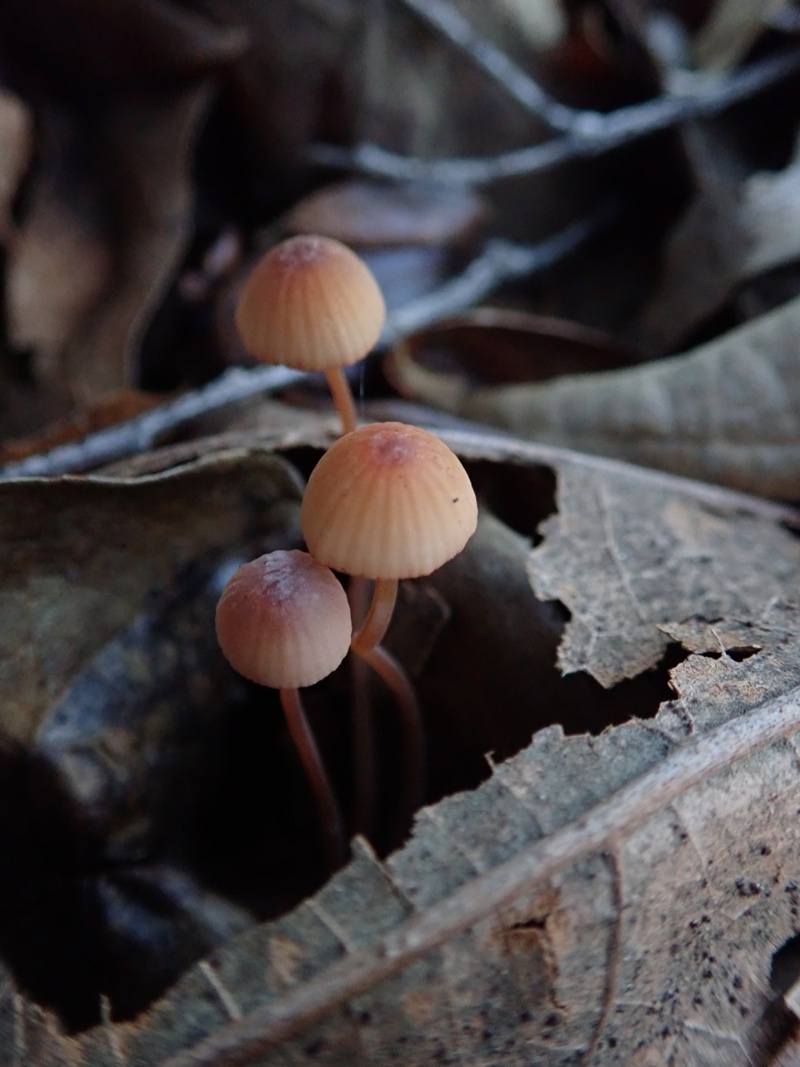
Other Mycena species
These may appear similar in size, color and overall appearance but lack the bleeding characteristic. There are tons of Mycena species across the globe.
To identify M. haematopus, observe its habitat on well-decayed hardwood logs. Check for the red latex when the mushroom is cut or damaged. Note the whitish gill edges, a key feature distinguishing it from M. sanguinolenta. The mushroom’s size, cap color, and growth in clusters also aid in identification.
Bleeding Mycena Medicinal Properties
Researchers have discovered unique chemicals in Mycena haematopus, including haematopodin B and mycenarubins D, E, and F. These pyrroloquinoline alkaloids, rare in terrestrial sources, show promising biological properties. Studies indicate potential cytotoxicity against tumor cell lines and antimicrobial activities, opening avenues for drug development.
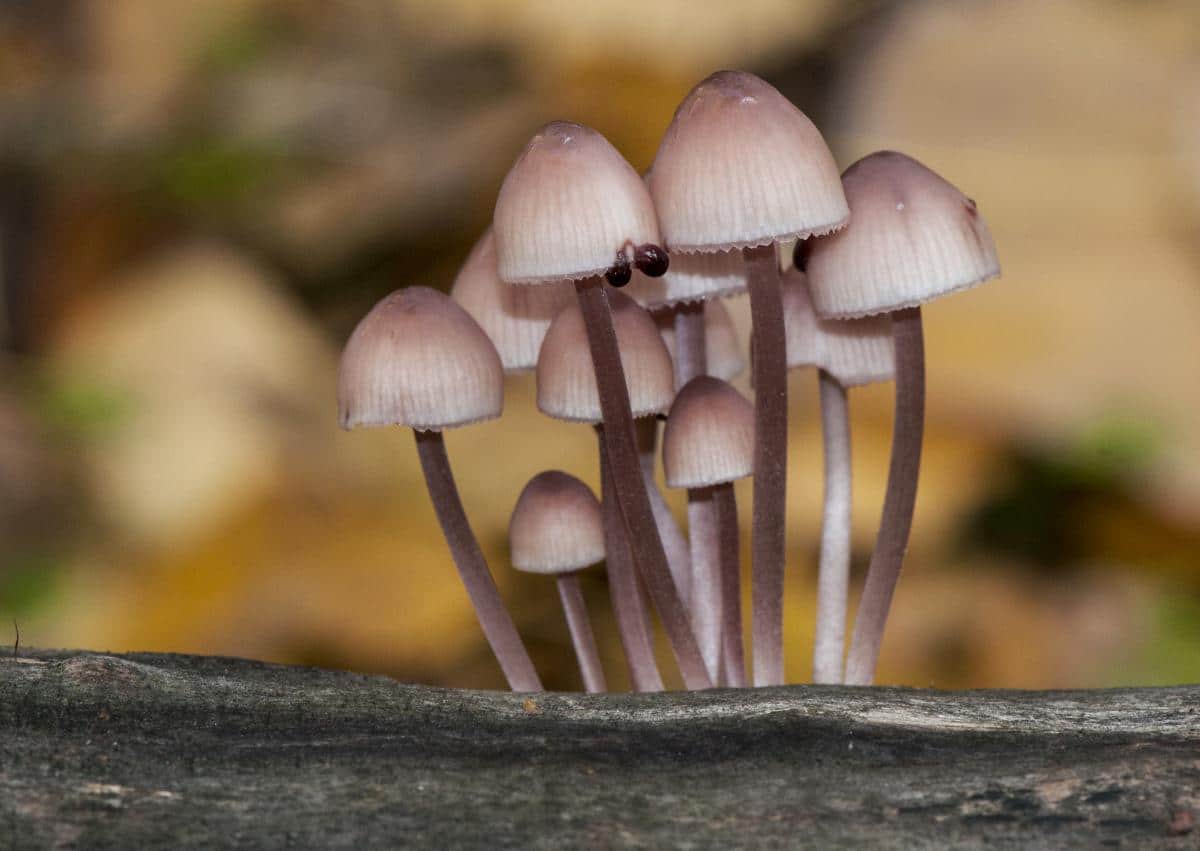
Scientific Research
Bioluminescence Studies
The bleeding mycena has a weak bioluminescence. Both mycelia and fruit bodies emit light, detectable only after 20 hours of X-ray film exposure. This phenomenon is likely caused by luciferases, enzymes that oxidize luciferin pigments. While its purpose remains uncertain, theories suggest it may attract insects for spore dispersal or deter predators.

Common Questions About Bleeding Mycena Mushrooms
What causes the Bleeding Mycena to “bleed”?
The Bleeding Mycena, or Mycena haematopus, has a unique feature. It secretes a purple-red liquid resembling the color of Cabernet wine when it is damaged. This phenomenon is caused by specialized cells called lactifers, which exist in the gill tissue. When damaged, these cells release the latex, creating the illusion of bleeding.
Can you eat the bleeding bonnet mushroom?
While some field guides suggest that the bleeding bonnet (another name for Mycena haematopus, aka Bleeding mycena) is edible, they are considered of poor quality due to their very thin and insubstantial flesh.
Does Mycena haematopus exhibit bioluminescence?
Yes, both the mycelia and the fruiting bodies of Mycena haematopus can glow. This bioluminescence is quite faint and typically not visible to the naked eye in the dark. It is so subtle that in one study, light emission was only detectable after 20 hours of exposure to X-ray film.





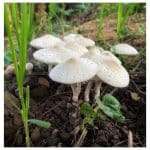
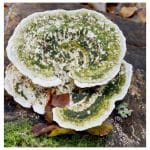
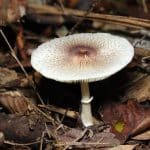
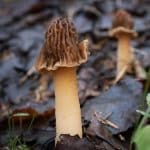
Leave a Reply